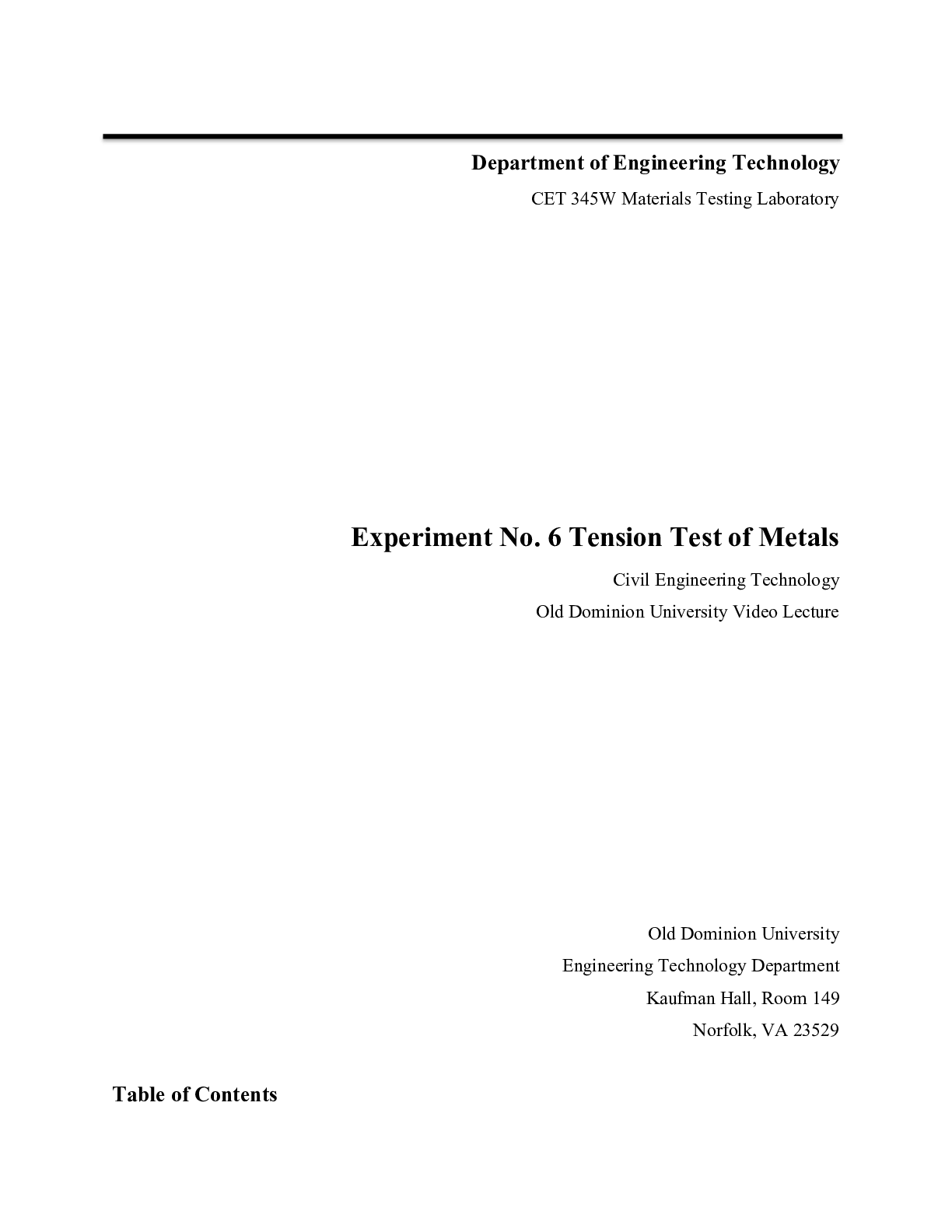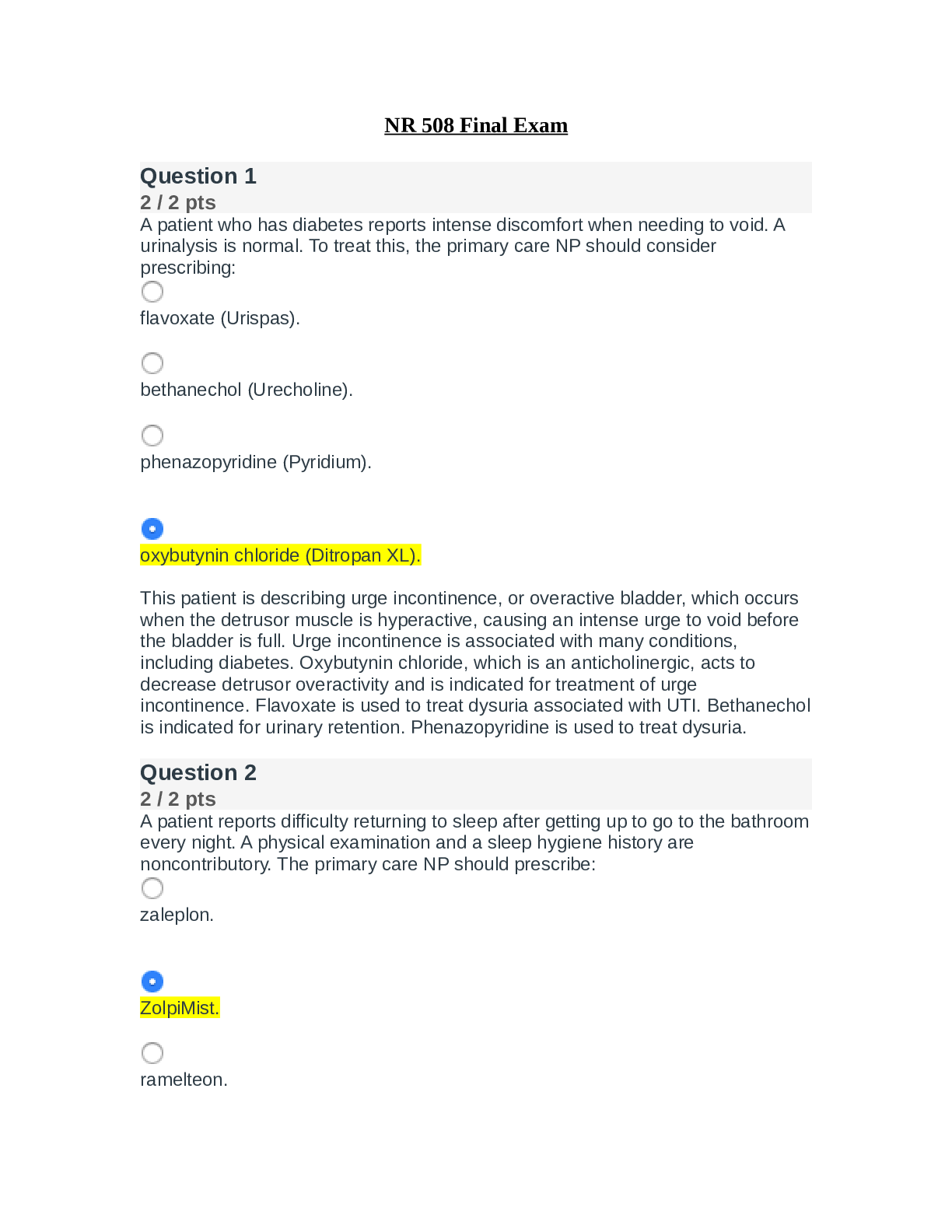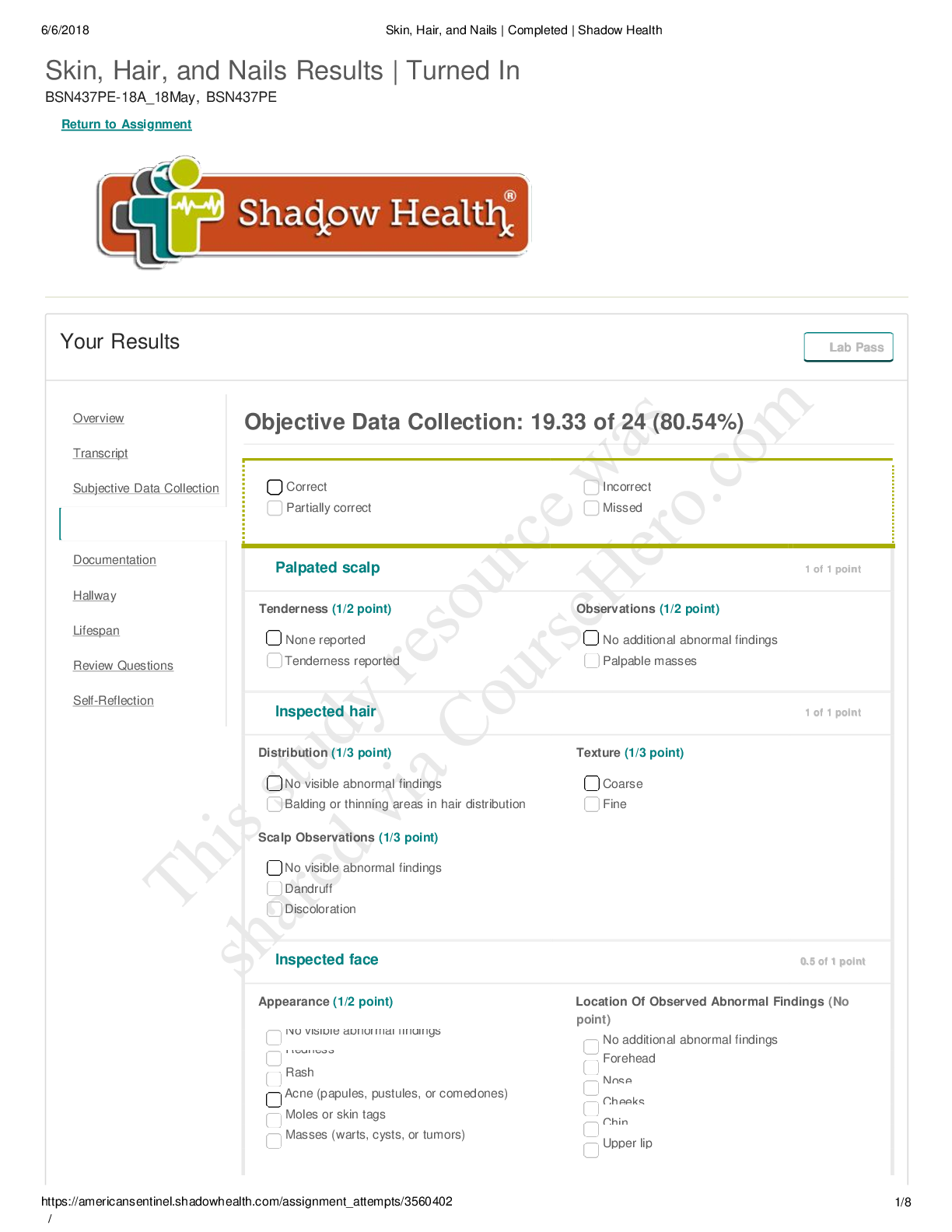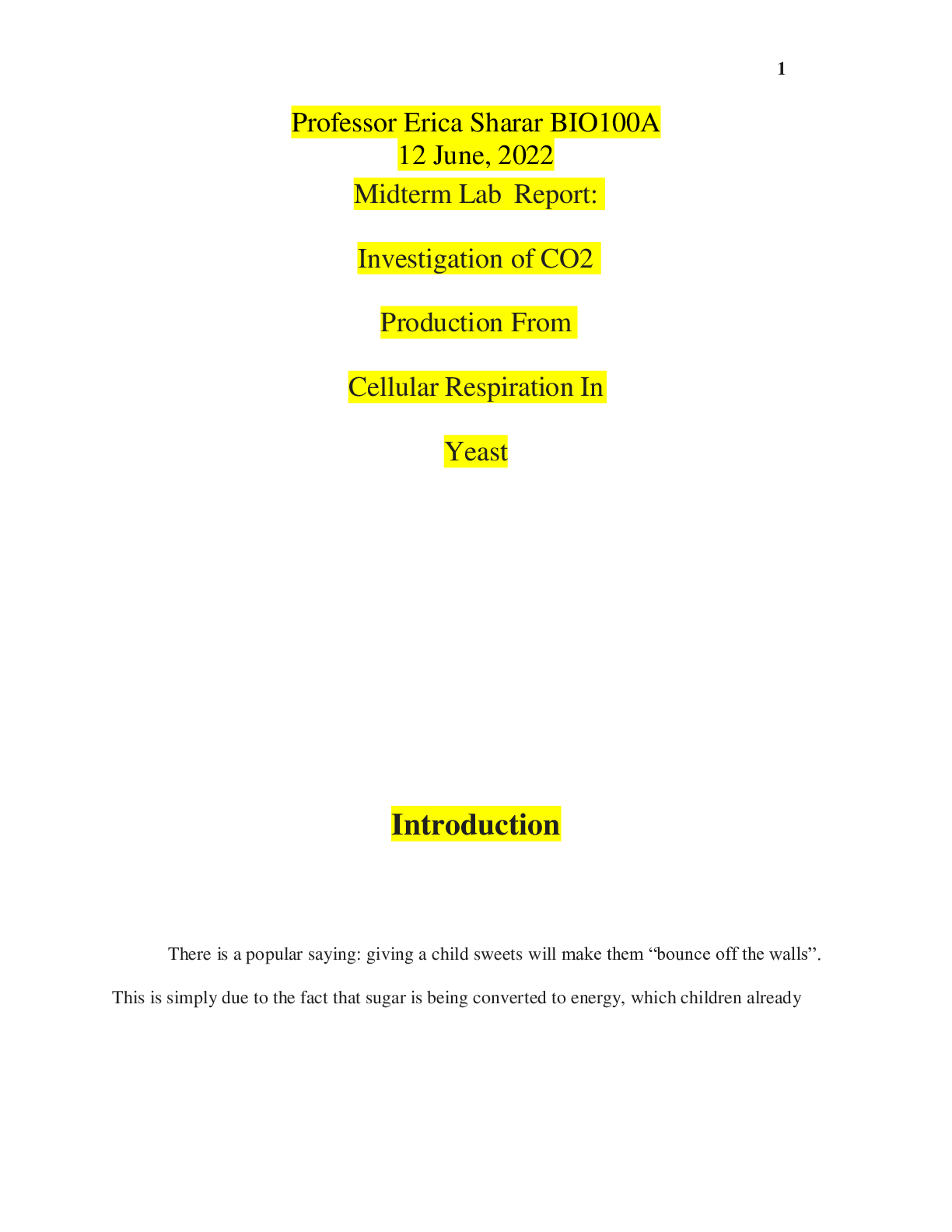Civil Engineering > Lab Experiment > CET 345W Materials Testing Laboratory Experiment No. 3 Hardness Test of Metals (All)
CET 345W Materials Testing Laboratory Experiment No. 3 Hardness Test of Metals
Document Content and Description Below
Summary Hardness is a common property of the material. It is used as an indication of the strength and resistance to scratching and wear. Hardness of metal has been variously defined as: (a) Indent... ion hardness, (b) Rebound hardness, (c) Scratch hardness, (d) Wear hardness (e) The degree of machinability. Hardness numbers, though very meaningful for making material selection, cannot be used directly in design or analysis as can tensile strength or modulus of elasticity. Hardness tests are useful in a qualitative sense for controlling uniformity of hardness. An empirical relationship has been established between the hardness number and the tensile strength of certain steels thus allowing the hardness test to be used as a qualitative nondestructive test of tensile strength.The most commonly used hardness tests in engineering are those involving the relative degree of indentation of the surface of a test material by either a small hardened steel ball or a diamond cone with a rounded point. Here, this lab experiment is performed using the two most frequently used tests, the Brinell and the Rockwell Hardness tests. The Brinell test was firstly introduced by J. A. Brinell in 1900. In the Brinell test of steel a 500, 1500, or 3000 kg load is applied through a 10 mm tungsten-carbide or hardened steel ball for a given time. The associated Brinell hardness number is calculated by dividing the applied load by the indented spherical surface area. The area must be determined through the aid of a special microscope and calculations. The Rockwell test is similar to the Brinell test in that the hardness number is a function of the degree of indentation of the test piece by action of an indenter under a given static load. Various loads and indenters are used, depending on the conditions of test. It differs from the Brinell test in that the indenters and the loads are smaller, and hence the resulting indentation is smaller and shallower. The Rockwell test can be used on materials having hardness beyond the range of Brinell tests. The hardness value is read directly from a dial indicator and is an arbitrary number that relates inversely to the depth of the indentation and directly to the material hardness. This report consists of a full description and operation of the Brinell and the Rockwell hardness testing machines. How to operate these machines. What pross and cones should be considered to operate it. [Show More]
Last updated: 1 year ago
Preview 1 out of 11 pages
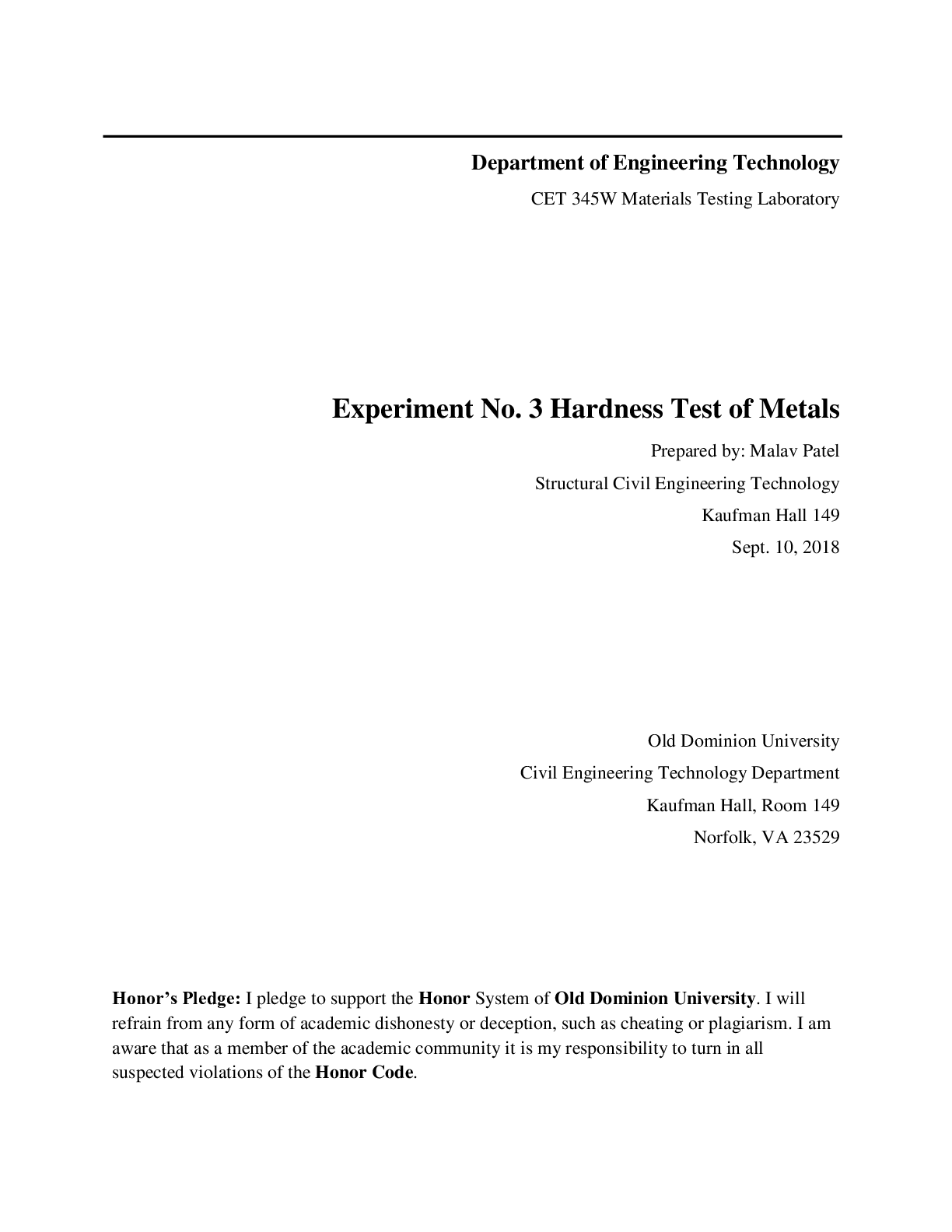
Also available in bundle (1)

CET 345W Materials Testing Laboratory: TESTING AND INSPECTION OF CONSTRUCTION MATERIALS.
combined materials testing laboratory report
By Prof.Pierro 2 years ago
$14
10
Reviews( 0 )
Document information
Connected school, study & course
About the document
Uploaded On
Jul 05, 2021
Number of pages
11
Written in
Additional information
This document has been written for:
Uploaded
Jul 05, 2021
Downloads
0
Views
71


.png)



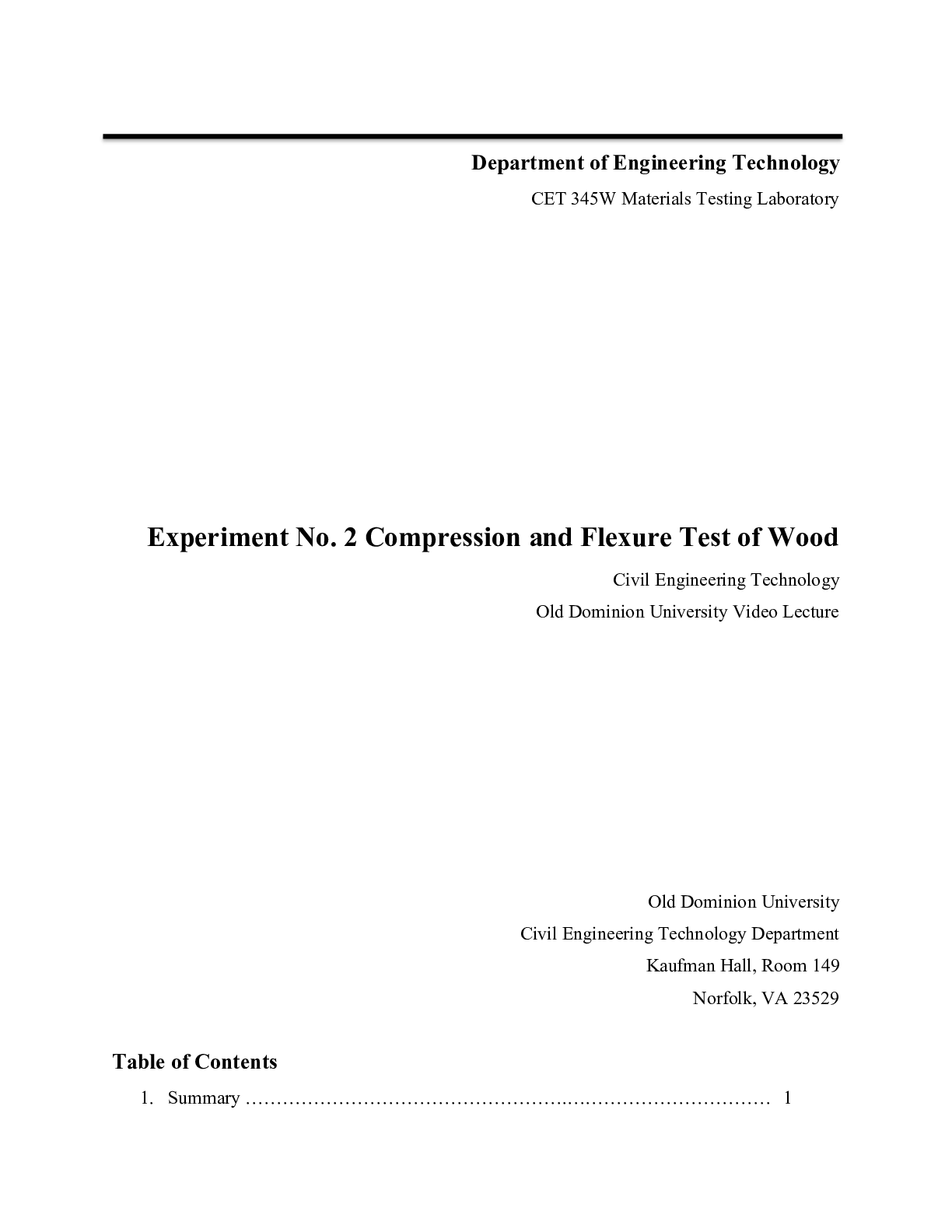

.png)
